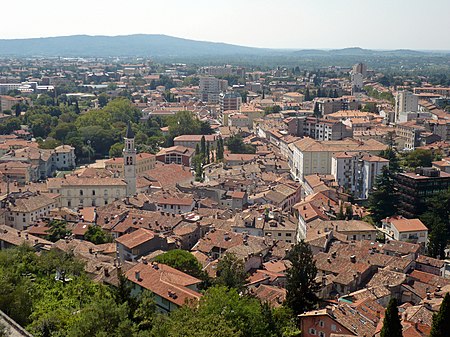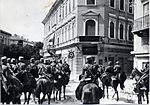Gorizia

Gorizia (Italian pronunciation: [ɡoˈrittsja] ; Slovene: Gorica [ɡɔˈɾìːtsa], colloquially stara Gorica 'old Gorizia' to distinguish it from Nova Gorica; Standard Friulian: Gurize, Southeastern Friulian: Guriza; Bisiacco: Gorisia; German: Görz [ɡœʁts] ; is a town and comune (municipality) in northeastern Italy, in the autonomous region of Friuli-Venezia Giulia. It is located at the foot of the Julian Alps, bordering Slovenia. It is the capital of the Regional decentralization entity of Gorizia and is a local center of tourism, industry, and commerce. Since 1947, a twin town of Nova Gorica has developed on the other side of the modern-day Italy–Slovenia border. The region was subject to territorial dispute between Italy and Yugoslavia after World War II: after the new boundaries were established in 1947 and the old town was left to Italy, Nova Gorica was built on the Yugoslav side. The two towns constitute a conurbation, which also includes the Slovenian municipality of Šempeter-Vrtojba. Since May 2011, these three towns have been joined in a common trans-border metropolitan zone, administered by a joint administration board.The name of the town comes from the Slovene word gorica 'little hill', which is a common toponym in Slovene-inhabited areas.
Excerpt from the Wikipedia article Gorizia (License: CC BY-SA 3.0, Authors, Images).Gorizia
Via Adelaide Ristori,
Geographical coordinates (GPS) Address Nearby Places Show on map
Geographical coordinates (GPS)
| Latitude | Longitude |
|---|---|
| N 45.933333333333 ° | E 13.616666666667 ° |
Address
Via Adelaide Ristori 52
34170 , Campagnuzza
Friuli-Venezia Giulia, Italy
Open on Google Maps









